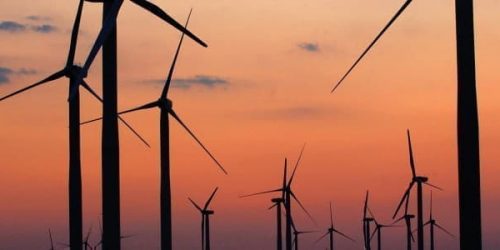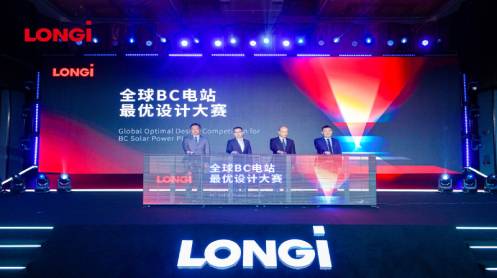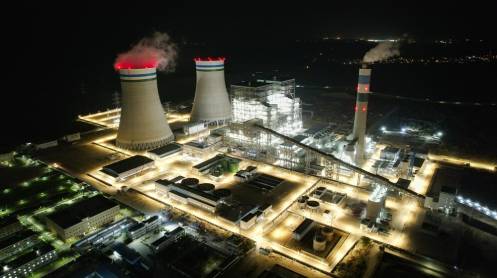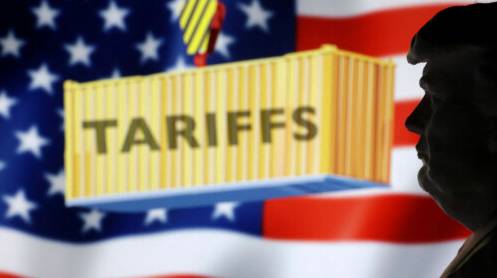Good news is in short supply during any crisis, and this one has been no exception. The energy industry is being pummeled to the ground by low oil and gas prices, crippled demand for hydrocarbons, and unfriendly banks. But there is one part of this space generating good news: renewables. And, more specifically, wind power. Often in the shadow of cheap solar, which can be slapped up on a rooftop to generate electricity, wind power is now coming to the fore. Costs, as for solar, have fallen substantially over the years, and businesses who want to polish their social and environmental responsibility reputation are inking long-term electricity supply contracts with wind power producers. Wind is on its way to becoming the new darling of corporate America.
A big part of this increasing popularity of wind among businesses is the fact that wind turbines produce energy cheaply, writes Sarah Golden, senior energy analyst at GreenBiz Group in a recent analysis on the topic.
She notes that the cost of producing energy from wind has fallen by as much as 70 percent since 2009. And last year, according to the International Renewable Energy Agency, wind, along with solar, beat the cheapest coal on cost. Renewable power is getting increasingly cheaper than any new power generation capacity running on fossil fuels, IRENA said in a new report recently. As a result, it said, “more than half of the renewable capacity added in 2019 achieved lower power costs than the cheapest new coal plants.”
No wonder then that businesses are picking renewable power over fossil fuels. But when it comes to wind versus solar, wind has one other advantage, according to Sarah Golden. It makes a lot of energy that companies can now sell via virtual power purchase agreements, which appeared on the market in 2013. These, unlike regular PPAs, do not require the buyer of renewable energy to buy the power directly. They can instead take the revenue generated by selling this electricity on the open market. As a result, writes Golden, virtual PPAs to sate account for as much as 85 percent of wind power procurement from the corporate world.
Meanwhile, costs continue to fall. According to the abovementioned IRENA report, costs for onshore wind generation last year fell by 39 percent, and for offshore wind, they fell by 29 percent. While this is less than the cost reduction in utility-scale solar, which registered an 82-percent cost decline last year, it is still an impressive reduction that will further enhance the popularity of wind energy among businesses.
These trends are driving not just larger but also wider adoption of wind power, Golden notes in her analysis. While initially, it was mostly information technology companies that bough wind-generated electricity, now there are all sorts of industries eager to buy clean power: retail, consumer goods, automotive, healthcare, even entertainment companies are choosing wind power.
Related: The Oil Bulls Betting On $150 Crude
No wonder, then, with all these features, that wind power accounted for the biggest chunk of renewable energy production last year, according to the latest edition of BP’s annual Statistical Review of World Energy. At 1,429.6 TWh, electricity produced from wind accounted for a little over half of the total renewable power generation in 2019.
This will continue to increase.
In the United States alone, some 25 GW could be added in wind power generation capacity by the end of the decade offshore alone, according to Wood Mackenzie. Currently, the United States has no offshore wind power capacity, but in 10 years, it could come to account for half of the new capacity additions, according to the energy consultancy. The first, Vineyard Wind I, should come on stream in 2023, effectively marking the start of offshore wind in the U.S.
But onshore wind is also growing. During the first half of the year, new capacity additions were more than double on the year, at 1.82 GW, according to data from the American Wind Energy Association. What’s more, construction of another 4.124 GW in new wind power capacity started during the first quarter of the year.
“We have reached an important turning point in the energy transition. The case for new and much of the existing coal power generation, is both environmentally and economically unjustifiable,” said the director-general of IRENA, Francesco La Camera, commenting on the agency’s latest report.
“Renewable energy is increasingly the cheapest source of new electricity, offering tremendous potential to stimulate the global economy and get people back to work. Renewable investments are stable, cost-effective and attractive offering consistent and predictable returns while delivering benefits to the wider economy.”
Businesses can see all that. And they can’t wait to get a piece of the wind power pie: Wood Mackenzie has forecast that demand for wind power from just the largest U.S. companies will reach 85 GW by 2030. But there are also many not-so-huge businesses who would also want in on the wind game. If prices continue to fall, this could unleash a golden era for wind.





